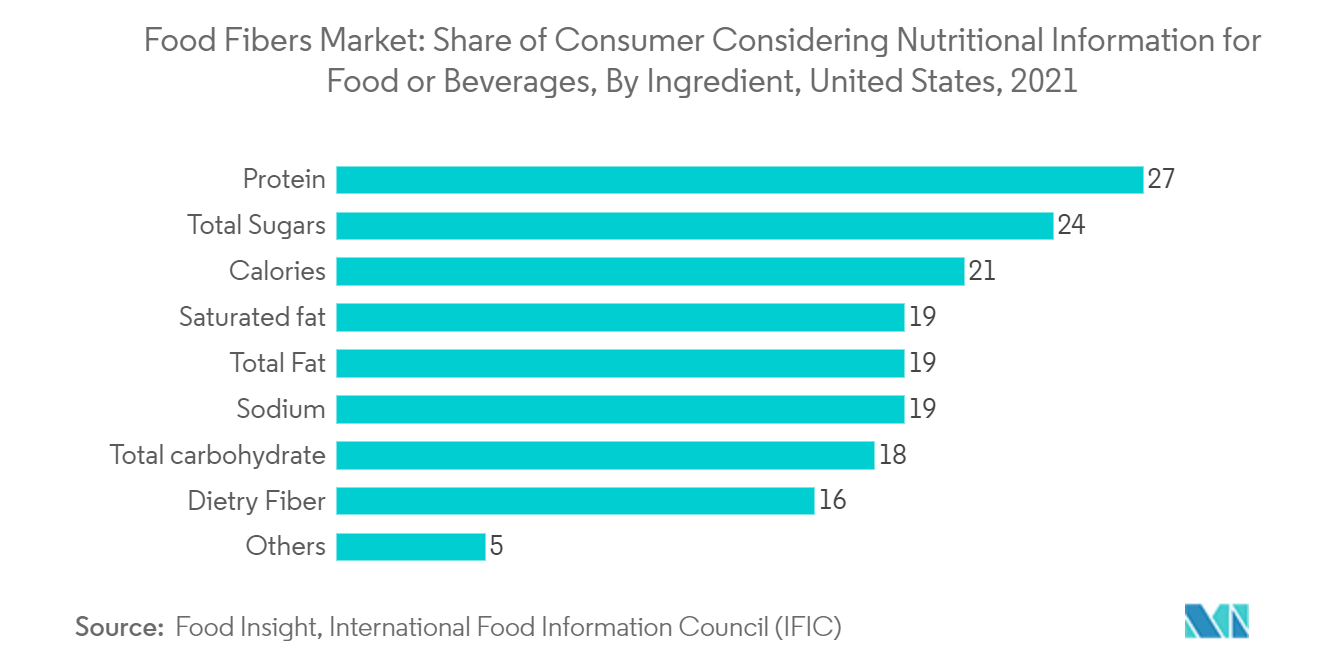Market Trends of Food Fibers Industry
This section covers the major market trends shaping the Food Fibers Market according to our research experts:
Increasing Trend of Fiber Fortification in Food Industry
Dietary fibers offer proven health benefits, including weight management, heart health, immunity, satiety, and digestive health, as more than half of consumers worldwide are trying to increase their fiber intake. This prompted manufacturers to fortify higher-value products, like crisps, puffs, flakes, and other dietary fibers. Furthermore, World Health Organization has recommended a fiber intake of 25 g/day for adult women and 38 g/day for adult men. However, globally, the average information is below 20 g/day. Additionally, according to the latest study by the University of California San Francisco Health, the average fiber intake by adults in the United States is around 15 grams daily. This represents half the recommended daily amount. This gap, coupled with increased consumer attention toward health and wellness, has triggered the fiber fortification trend in the food industry.
In September 2021, the United Kingdom Food and Drink Federation (FDF) launched a new initiative to boost the nation's fiber consumption. Currently, only 9% of adults are getting recommended fiber intake. Several food brands, including Nestlé, BirdsEye, and Kellogs, have supported this 'Action on Fiber' initiative and have undertaken pledges such as highlighting higher fiber options on product packaging to commitments to launch new products containing high amounts of fiber. In the past few years, the increased fiber demand has also been boosting the global trade of plant-based, clean-label fibers such as inulin.

Europe Remains Prominent in the Market
The increasing awareness regarding the consumption of food fibers and the associated health benefits are the main factors supporting the growth of the market in the region. This has increased the transition from consuming traditional foods to high-fiber foods. Additionally, the demand for soluble fiber in this region has also soared, as soluble fiber found in beans, oats, flaxseed, and oat bran may help lower blood cholesterol levels. In July 2021, due to the continued growth in demand for soluble fibers, Cargill invested USD 45 million (EUR 38 million) in the expansion of its European portfolio of starches, sweeteners, and texturizers to include soluble fibers.
The UK Food Standards Agency (FSA) has adopted an AOAC international method to authorize the labeling of inulin as a fiber. This recent development allows manufacturers to label inulin and oligofructose as dietary fibers in the United Kingdom. Manufacturers now claim the following benefits on the ingredient label - enriched with fiber, fibers added, and rich in fiber. Moreover, high traction around clean-label food, functional food products, and plant-based and sustainable food products in the region will also likely make fibers a key ingredient in the European food industry in the coming years.


